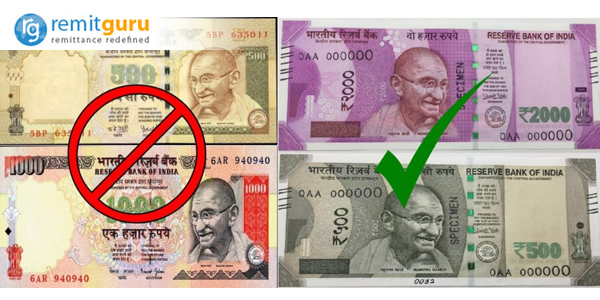The process of transfer of Money from one wallet to another has rapidly revolutionized during recent times and more rapidly have transformed the ways of embracing this phenomenon by even the common man. Long gone are the archaic ways when common man wanting to send the money, used to resort to Post Office Money Orders or to still more civilized way of queuing up in banks, waiting patiently for his turn, to process his own saved money. Technology has, however, like many other spheres of life, come to the rescue of the civilization, in money-transfer operations. The technology involved may be supremely complex, in terms of devising the configuration & infrastructure but fortunately the interface of the technology with the user is very simple and no wonder, as mentioned above, on-line money transfer has become very pervasive & a routine thing to do. On-line, as the name suggests, pre-supposes the availability of internet facility for the money-transfer to take place effectively. This in normal sense & in Indian context particularly, could have become a very restrictive thing. But the government agencies have been ensuring, through their various programs with huge capital outlays, data connectivity through high-speed internet highways. It is the ambitious aim of the current government to bring about 100% tele-density and thereby making the availability of internet absolutely citizen-oriented. This removes the very first obstacle that ?online money transfer? could have faced in becoming popular with masses, at grass-root level. There are ample reasons why people have been preferring the on-line ways of dealing with money: Let alone the domestic situations, money can be transferred online, beyond the borders to overseas locations, through global payment service providers like Western Union and RemitGuru. These are the facilities at some costs which will have to be researched & availed of depending upon the emergency on hand. There is invariably more cost, the faster is the remittance service. All in all, on-line money transfer has become very pervasive, a day-to-day routine thing, will become more & more flexible, safe & secure. All that one requires is deep wallets!
Remittance simply means payment of money from one point or entity to the other. History indicates that when it became difficult for the head of the family to earn basic livelihood at a place where he was born, he had to leave his hometown and explore other more developed locations where he could find work, earn money, save a bit for the family and send the savings home periodically. This private savings of worker is spent in his home on basic necessities. This process of money-transfer is called remittance.
We have been witnessing this phenomenon in India since migrant labour first started re-locating to nearby developed towns/ cities and 'remit' money home. Over a period of time this primitive form of migration got evolved into migration of families, migration of extended families as well as migration from less developed cities to metros and finally migration abroad.
It has since long become a complex economical subject. So much so that organizations are being built around these services of remitting money. Newer & newer products are being designed to render this process simpler for the stakeholders. As a matter of fact,economies of certain countries are having a direct bearing on the remittances received.
The level of remittances received in certain countries is astronomically high, to the extent that the remittances are quantified in terms of percentage of GDP of these countries.
The core parameters of this process of remitting money, however are very basic and revolve around:
Time taken to deliver the money to the intended recipient
The safety factor, the assurance that money would reach in the hands of the recipient in a secured way.
The ease with which money could be remitted, that is the paperwork involved. The lesser and simpler the paperwork or smoother the mechanism (without compromising the safety), the better.
Fees for rendering this service. Obviously lesser the commission charged by the service-provider, the preferable he is from the point of view of sender and/or recipient.
During the initial stages Post Offices, money orders were holding monopoly in sending remittances. Thereafter& even today Banks are playing a stellar role in remitting money. There are formal & informal couriers handling remittances effectively.
The Banking products have got transformed in their nature and speed and complexity of mechanism. Starting from age-old Demand drafts, banks now offer ATM cards, facilities like online money transfer (subject to availability of internet), NEFT (National Electronic Funds Transfer), RTGS (Real Time Gross Settlement) to name a popular few.
There are international organizations like PayPal, Western Union, Remitguru etc. offering services in International as well as domestic sector with a relevant fee for their services. The Fees structure depends upon the location of recipient, quantum of money to be remitted and the speed with which the transfer takes place. In respect of international transfers, even the exchange rates among various currencies are accounted for.
Remittances thus serve as a basic lifeline for survival & development of modern work-force & even countries where human capital is a major factor governing their economy.

Last year on November 8, 2016, Indian Prime Minister Narendra Modi made an abrupt-yet-drastic decision, a move that later came to be known as 'demonetization'. Addressing the nation via a television broadcast, he announced that all 500 and 1,000 Indian rupee currency notes would 'no longer be legal tender'; and in it's place a new 500 and 2,000 denomination notes will be introduced. As per our respected PM's speech, reasons for the sudden introduction of Demonetization were, lot of fake currency in the Indian market, corruption, black money, rise of terrorism across the nation. In his speech,
PM Narendra Modi also promised and assured that he will make a point that the nation is corruption free and more secure financially.
So, what were the ways one was suppose exchange the old currency? People were given options to either deposit the old notes into their own bank accounts or go to any bank and exchange the old notes for new ones. The banks all over India were kept closed on the 9th November, 2016, only to resume on the 10th November, 2016. The initial limits per transaction were Rs 2,000, for an ATM withdrawal per card, Rs 10,000 cash withdrawal per day and Rs 20,000 per week. Rs 4,000 could be exchanged for old notes for new ones. Later on after few days the transaction limits were increased, now an individual could withdraw Rs 2,500, from any ATM. The weekly limit of Rs 20,000, were been increased to Rs 24,000. However after, the currency notes exchange has been totally stopped, although the limit had increased in the interim to Rs 4,500. Later the Indian Government gave a last chance to district cooperative banks, commercial banks and post offices to deposit the banned Rs 500 and Rs 1,000 notes with the Reserve Bank by July 20, 2017, provided they were collected within the specified time period.
The other exemptions were in the form of acceptance of old notes at selected government department offices, payment of electricity bill, municipal or corporation tax, at petrol pumps, at government hospitals, buying train and airline tickets. These exemptions were withdrawn since 14th November, 2016. The old currency notes acceptance increased till 15th December, 2016, but later the date was capped till 2nd December, 2016. Highway tolls were suspended till 14th November, 2016 & then extended till 2nd December, 2016.
One big change we all got to see it resulted in many fold increase in the use of Digital Wallets. Although the rise is too steep, in comparison to the past, but for a full cash less economy, India needs to go miles if not more. India has now become a less cash economy and progressing towards a cash less economy. The wallets limits which were Rs 10,000, earlier without KYC have now been increased to Rs 20,000. All the other limits and restrictions remain the same, on the wallets. The main idea of this move has been to bring the black money into circulation plus the added benefit of rendering the counterfeit currency notes worthless. Further the agenda of this demonetization has been to blunt the force of the anti-national forces that were very active in parts of India, by the use of cash.
The remittance services, especially the cash payouts were equally been hit hard, by the move of demonitization. There hardly any cash that is available in the payout counter across India. The agents and sub agents have resorted to using digital wallets to their clients or the remittance end user. In a nutshell, we can conclude that there is a lot of money but no or less cash in the Indian economy. How will this fare for the country is yet to be seen.
So the year 2017 is about to end and we have almost completed a year of demonetisation. And 'after a study' here are some big changes India saw after a year of demonetisation: [as per reports]
1. Indian economy and assurance of better jobs for the poor formalised: According to PM's tweet on his twitter account, Almost 50 lakhs labourers got their bank accounts active and 1.03 crore registrations of labourers took place in ESIC (Employee's State Insurance Corporation).
2. Decisive blow to terrorism and naxalism: In Naxal-affected states, terror incidents are down 45%, according to data from the South Asia Terrorism Portal or SATP.
3. Increase of unprecedented growth of imports by 23% in a year: Comparing the escalating rise in India's imports from China, the country's import in first half of 2016-17 stood at Rs 1.96 lakh crore, whereas in 2017-18 it was increased to Rs 2.41 lakh crore.
4. All cash withdrawn has been translated into a rise in bank deposits: After the cash ban was announced last year, only about a third of the Rs 15.44 lakh crore of invalidated bills wasn't deposited into banks, while the rest of the money made bank deposits rise.
5. Reduction in storing the black money and so does the money in circulation: India would have had some Rs 18 lakh crore in high-value bills today if it wasn't for demonetization, instead it has Rs 12.5 lakh crore.
6. Spending hours in long queues to withdraw money led to deaths: After one month of the announcement of demonetization, in 720 hours, there were 720,000 deaths, as reported by Forbes on December 8th, 2016.
7. Labourers in the textile, footwear, plastic and metal industry got adversely affected: Labourers from Delhi have been compelled to leave National Capital Territory after demonetisation as they are unable to get money.
Conclusion to the whole scenario - Even though demonetization move created adverse short-term policy impact the real impact of must be assessed in the medium/long term. The reduction in overall investments, both in the formal and informal sectors, would certainly reduce economic growth potential. However, the move need to be followed up with ensuing actions to remain effective. These actions relate primarily to structural changes to make the system more lawful, reducing too much bureaucracy, make the tax system simple and transparent. In addition, a greater effort is required to include the informal sector and ensure effectiveness and the illegal activities such as generation of black money and corruption should not be channeled back into the economy.
